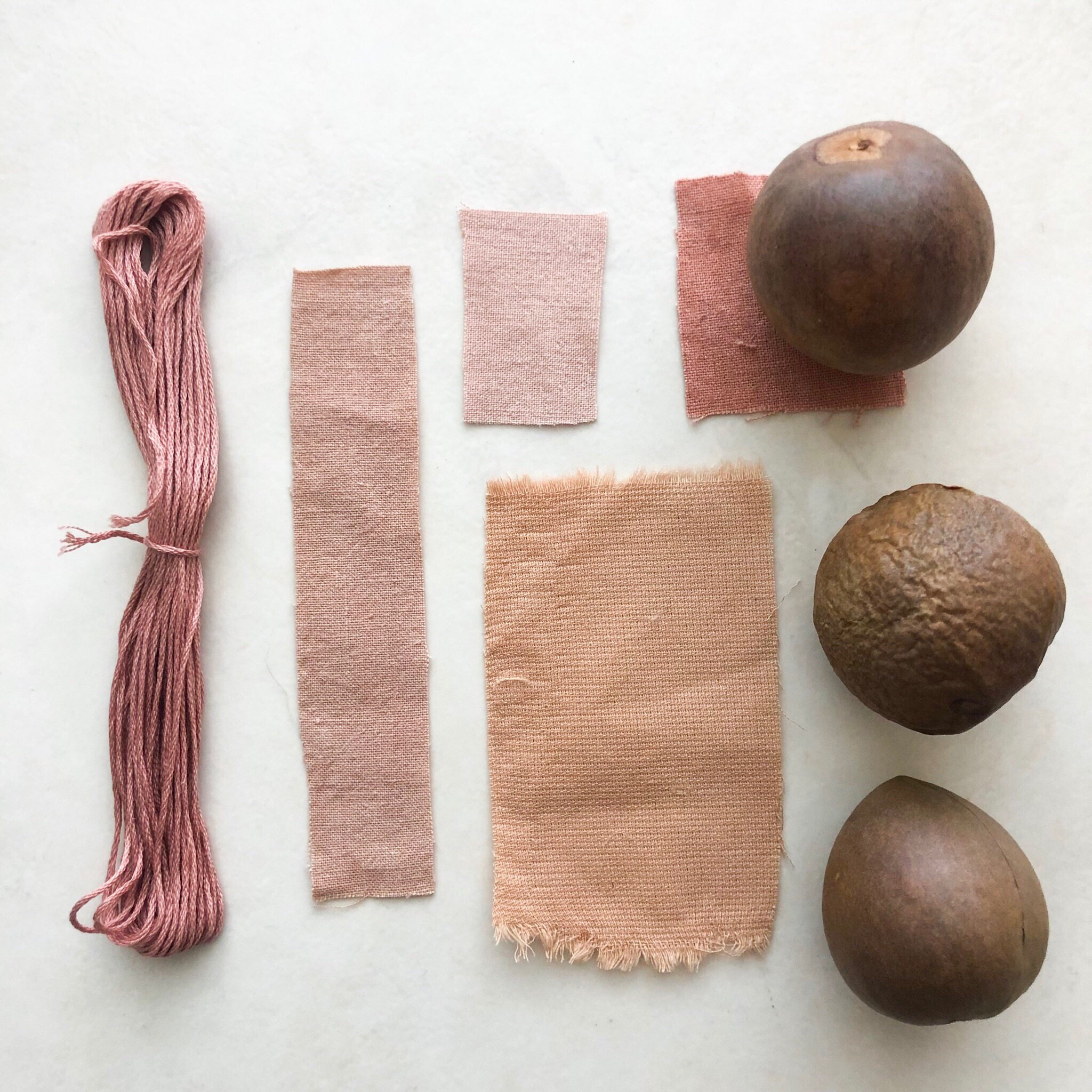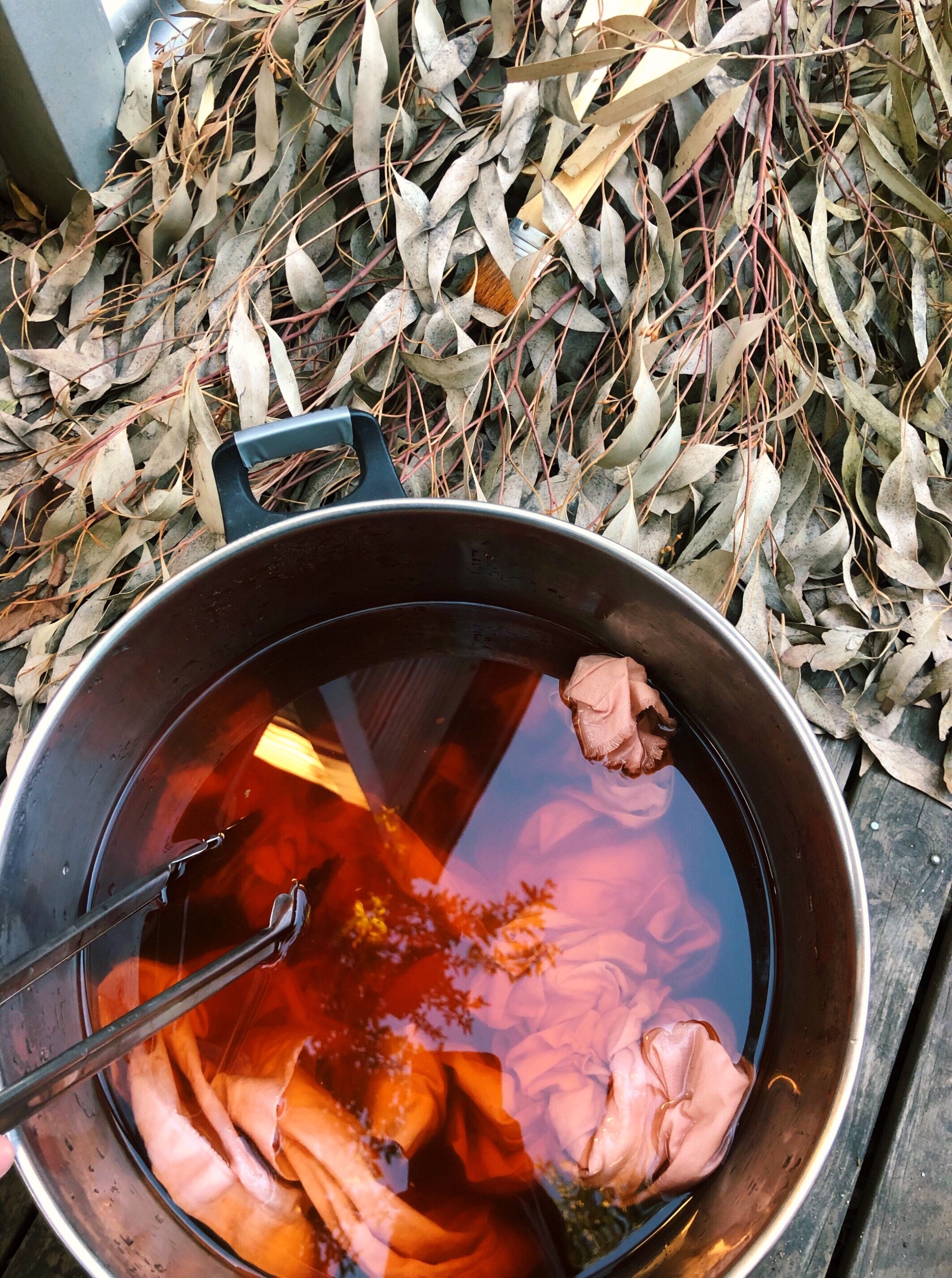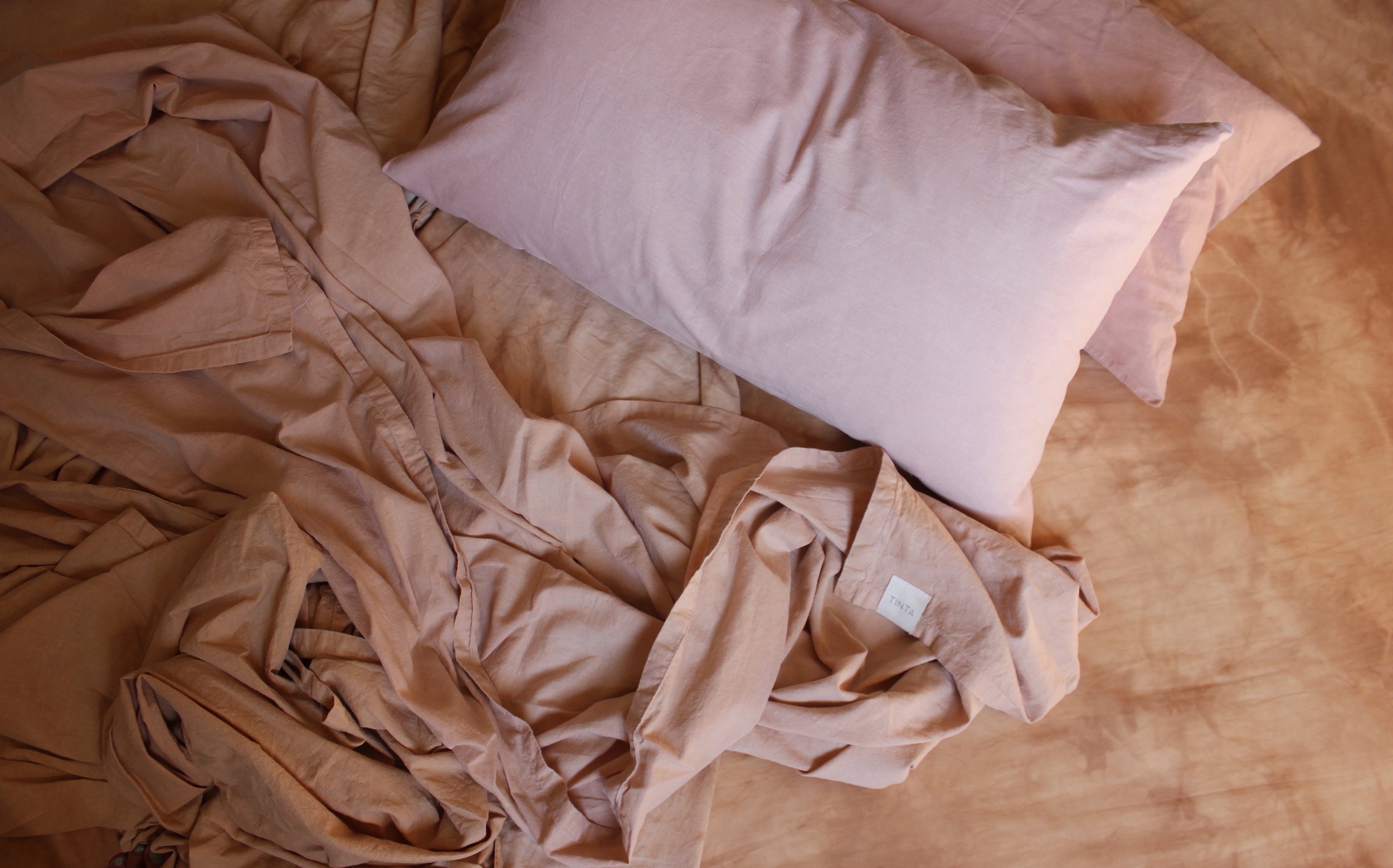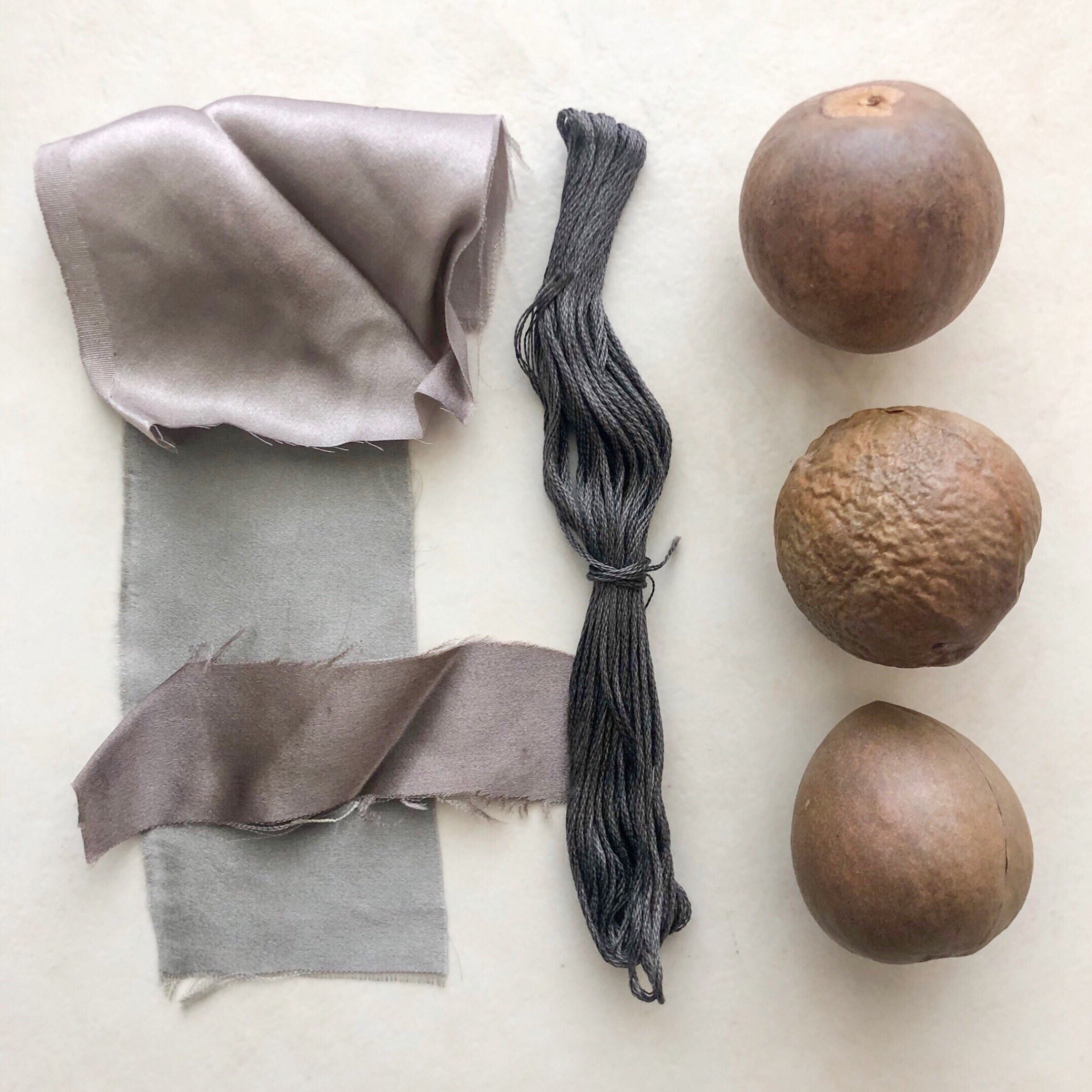How To Dye Fabric With Avocado Stones
Maybe you’ve heard a little bit about avocado dyeing. Or maybe you’ve only just discovered that you can make pink dye from avocado stones! Either way, you might have some lingering questions.
Avocado stones are a great dye plant to start with since you can find them anywhere, and they create rich, long-lasting colours on both plant and protein fibres.
Read on for my top tips, and if you want to learn more download the free ebook ‘Natural Dyeing For Beginners’ or join me in our online course!
EQUIPMENT
You can find everything you need to start dyeing at home at your local second-hand store. Although natural dyes are made from food and plant materials, it's not advised to use the equipment you use for cooking. Here are a few basics that will help you get started:
- Stainless steel or plastic washing line and pegs
- Large plastic bucket
- Large stainless steel/plastic strainer
- Large stainless steel/plastic tongs
- A large non-reactive cooking pot in stainless steel or aluminium (you can use copper or iron, but they may shift the colour of the dye)
- Access to a stove with ventilation (don't dye and cook at the same time!)
MORDANTS
There are so many types and methods to choose from, but the simplest pre-treatment for cellulose fibres like cotton or linen is soy milk. This is not technically a mordant, but it makes your plant fibres act like protein fibres. You can dye protein fibres like silk and wool with avocado stones without using a mordant. Make your own soy, or use organic, unsweetened soy from the supermarket.
PROCESS
Some dye materials like lots of heat, and others don't. Avocado stones are in the latter category. If you heat them too hot and too fast, the colour is likely to be more cloudy, brown and muted. To get a bright pink, keep your dye pot on a very low heat for about 1 hour to gently extract the colour. It should end up looking bright and clear. Depending on how heavy the piece of fibre you want to dye is, you can use as few as two or three avocado stones. Generally, the more stones the deeper the colour will be. A good guide is roughly 5 stones to 250 grams of fibre. Strain the stones and immerse your fabric while the water is still hot. Leave to soak until it reaches the desired shade (I don't notice much difference after 12 hours). Squeeze out any excess dye, rinse in cold water and hang dry in the shade.
STORAGE
There are a couple of options. Firstly, make sure you wash off any avocado flesh. Then you can either put them in a bag in the freezer or air dry them and store in a large jar. I find that freezing is the easiest and quickest option, as they sometimes grow mould as they air dry. To avoid this, try leaving them in a sunny spot until they have dried out. Freezing also keeps the stones fresher. I find that the fresher the better the colour, but you can still make a beautiful pink from old, shrivelled stones. If your stones have grown some mould, try washing it off and using them anyway.
WASHING
Because there are no harsh chemicals used in the natural dyeing process, your fabrics need to be treated with a little extra care. But if you use the appropriate mordant and wash in cold water with natural detergent, the bright pink shades will stick around. In fact, avocado dye is high in tannin so it's one of the more colourfast dyes. If you're selling your fabrics, always test first, but if the fabric is for your own use, just experiment. You can always dye it again later! Check out our Product Care page to learn more.
MODIFYING THE COLOUR
This colour is made using the same process as noted above, but with an iron afterbath. The iron salts (ferrous sulphate) immediately shift the colour from a pink to a grey. You can purchase these from an online natural dyeing store, or from your local hardware store. Iron is considered safe in small amounts, and only roughly 2% of the weight of fibre is required to achieve great results. It can irritate the skin, so just make sure that you use some gloves and work in a well-ventilated space.
Keen to learn more? Download the free ebook ‘Natural Dyeing For Beginners’ or join me in our online course!







